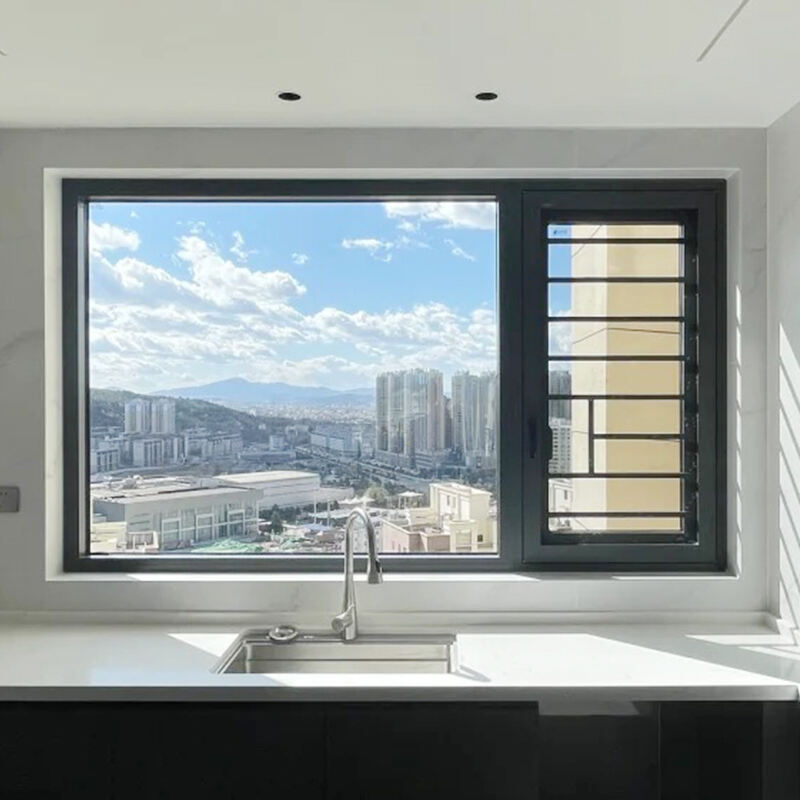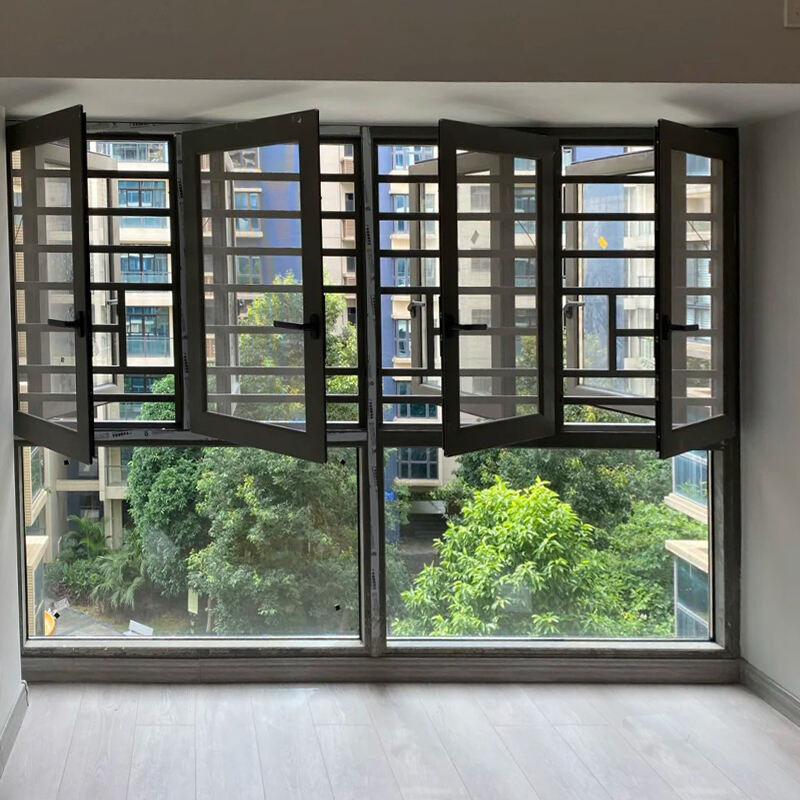Mechanism of Energy Efficiency in Casement Windows
Airtight Seal Formation in Closed Position
Energy Efficiency Casement windows owe their energy efficiency to the sash, which closes by pressing against the frame allowing for little to no air infiltration. The design eliminates the air infiltration that plagues sliding windows and is up to 70% less leaky compared to ordinary, old-school double hung windows. The heavy-duty perimeter seal closes gaps from hinge side to driving side for the life of the door over seasonal changes in temperature.
Compression-Based Locking Mechanism Analysis
Multi-point locking systems enhance efficiency by actively compressing the sash against the frame. Rotating the crank engages 3-5 heavy-duty hooks, applying uniform pressure exceeding 40 PSI around the perimeter. This ensures:
- No weak zones prone to air leaks
- Consistent performance despite material expansion/contraction
- Resilience against extreme weather conditions
Premium hardware retains over 95% compression force after 25,000+ operational cycles, ensuring long-term thermal performance.
Material Innovations: Vinyl vs Fiberglass Frames
Frame composition significantly impacts heat transfer:
- Vinyl: Multi-chambered designs trap insulating air pockets, achieving U-factors as low as 0.30.
- Fiberglass: Offers superior thermal stability with foam-filled U-factors down to 0.26—15% better than standard vinyl.
Both materials use reinforced corners and fusion-welded joints to prevent warpage.

Comparative Energy Performance Across Window Types
Casement vs Double-Hung: DOE Leakage Statistics
Casement windows reduce air infiltration by 40-50% compared to double-hung models. While double-hung windows average 0.35 CFM/ft² leakage due to sliding tracks, casements maintain just 0.08 CFM/ft², translating to 18-22% annual HVAC savings in temperate climates.
Energy Transfer in Fixed vs Operable Frames
Fixed windows have higher thermal resistance (R-values of 4.5–5.7) than operable casements (3.1–3.8). However, modern NFRC-certified windows bridge 87% of this gap, reducing the operability penalty to 12–15%.
Key Features Enhancing Thermal Performance
Multi-Chambered Frame Designs
3–5 sealed air chambers in vinyl and fiberglass frames disrupt thermal transfer, lowering U-values by 15–20% versus single-chamber designs. Five-chamber systems achieve R-5 insulation—equivalent to basic wall cavities—through staggered airflow patterns.
Low-E Glass Coatings and Gas Fills
Low-emissivity coatings reflect 98% of infrared radiation while maintaining visible light transmission. Combined with argon or krypton gas fills, these systems achieve U-values as low as 0.17—a 73% improvement over clear glass.
Warm Edge Spacer Technology
Advanced spacers reduce edge conductivity by 62% versus aluminum models, lowering condensation risk by 40–60% and improving R-values by 0.5–1.0.
Installation Best Practices for Maximum Efficiency
Flashing Techniques for Moisture Control
Self-adhering membranes and metal drip caps reduce moisture intrusion by 80%. Proper flashing extends window lifespan by 12–15 years in coastal climates by preventing rot and mold.
Common Air Infiltration Mistakes
Avoid these errors to minimize energy loss:
- Skipping backer rods with spray foam
- Neglecting sub-sill sealing
- Misaligning compression latches
These oversights can increase heating costs by $180–$240 annually in cold climates.
Energy Savings from Proper Installation
Correctly installed casement windows save 18% more energy than retrofit double-hung units. ENERGY STAR® certifications require ≥0.3 ACH, achievable through:
- 3/8" silicone-polymer sealant beads
- 4-point anchoring with load-distributing brackets
- Post-installation thermal imaging
A Zone 5 study showed 23% annual savings ($420/household) with professional installation, low-E glazing, and warm-edge spacers.
Cost-Benefit Analysis of Energy-Efficient Upgrades
Payback Period Calculation Model
Window replacements typically pay back in 3–8 years via HVAC savings. Key factors include regional climate and electricity rates, along with maintenance and durability benefits.
Utility Rebates and Tax Credits
Federal incentives like the 25C tax credit cover 30% of costs (up to $600), while utility rebates add 10–25%. ENERGY STAR-certified windows often qualify for state programs.
Case Study: Zone 5 Retrofit
A Chicago-area upgrade with low-E casements reduced heating use by 22%. The $5,800 project (post-rebate) saved $780 yearly, yielding payback in 7.4 years and improving winter indoor temperatures by 18°F.
Emerging Technologies in Window Insulation
Aerogel-Infused Frames
Aerogel’s nanoporous structure (R-10.6 per inch) cuts thermal bridging by 63%. Zone 5 field tests show a 12% reduction in heat loss compared to standard frames.
Phase-Change Glass
Bio-based paraffin compounds in phase-change glass stabilize temperatures with 58 kJ/kg latent heat capacity. Recent studies show 19% lower solar heat gain versus low-E alternatives, potentially reducing HVAC runtime by 6–8 hours weekly in temperate zones.
FAQ
Why are casement windows more energy efficient than double-hung windows?
Casement windows are designed with a sash that presses tightly against the frame, minimizing air infiltration and leakage, unlike double-hung windows which operate on a sliding mechanism that can have greater gaps.
What materials are casement window frames typically made from?
Casement window frames are typically made from materials like vinyl and fiberglass, which have insulating properties and are designed to prevent warping and enhance thermal performance.
How can I enhance the energy efficiency of my casement windows?
Optimizing energy efficiency in casement windows can be achieved by ensuring proper installation, using low-E glass coatings, and integrating multi-chambered frame designs to reduce thermal transfer.
Are there any tax credits available for upgrading to energy-efficient windows?
Yes, federal incentives like the 25C tax credit offer up to 30% coverage on costs for energy-efficient window upgrades, and additional utility rebates may apply.

 EN
EN








































